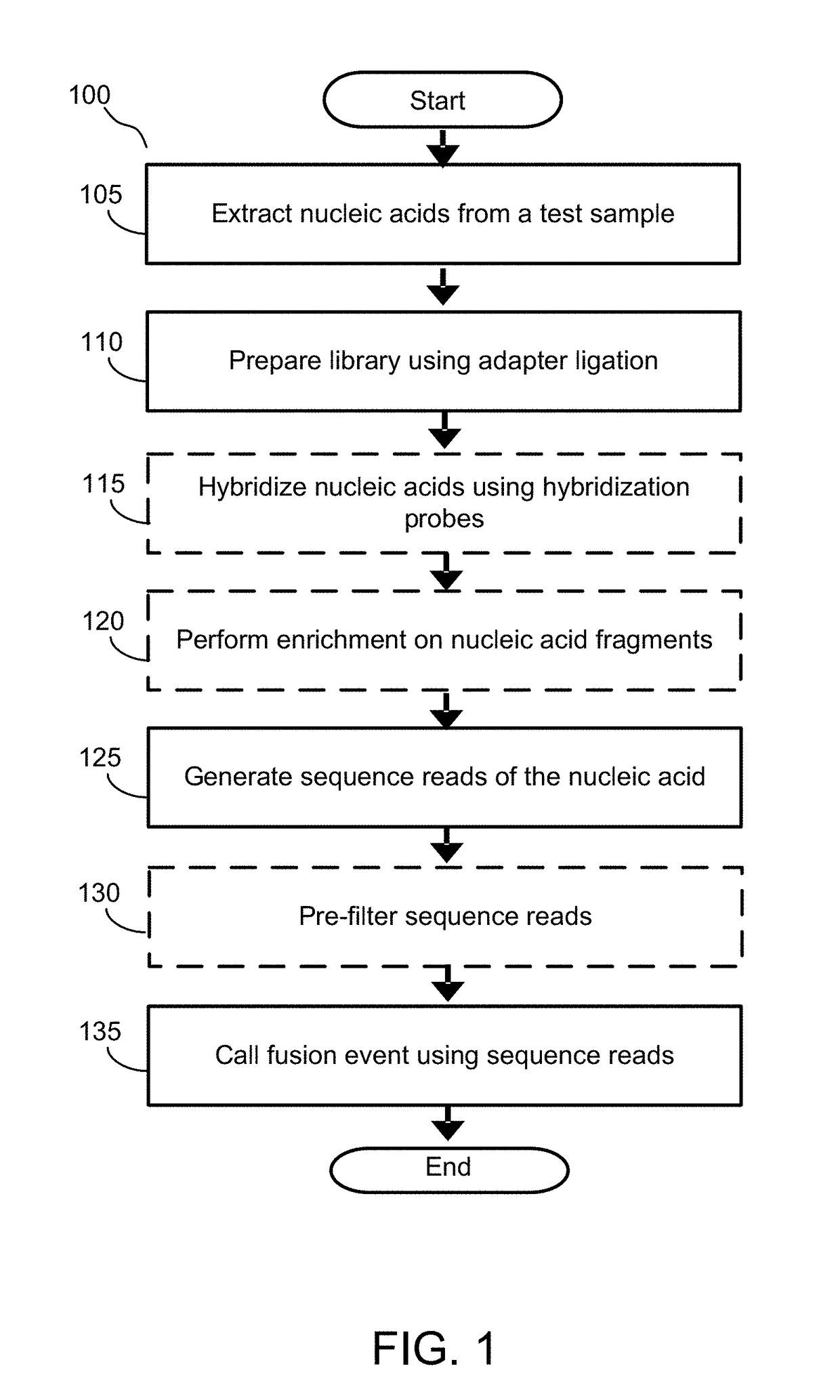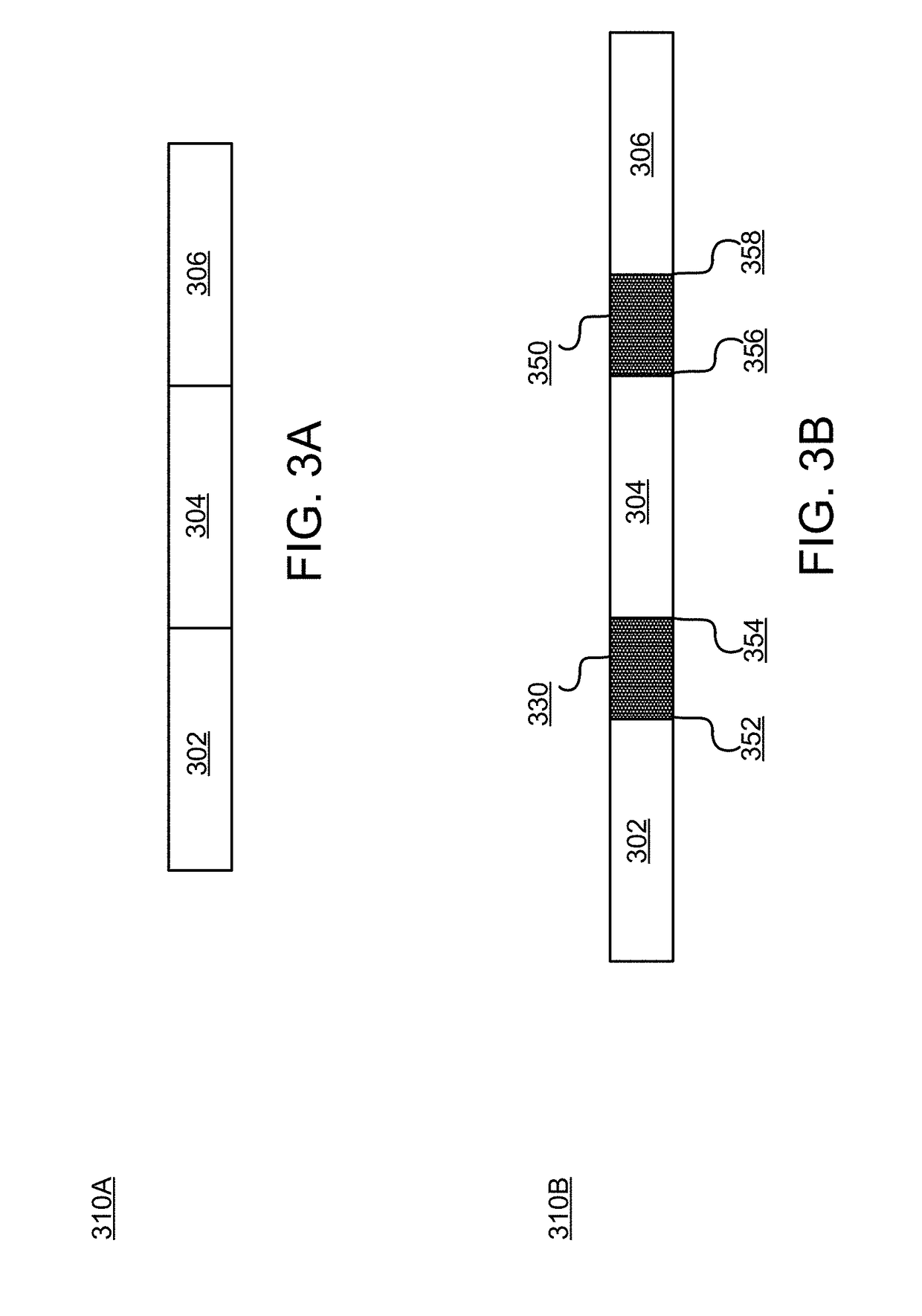Alignment free filtering for identifying fusions
a fusion and alignment free technology, applied in the field of alignment free filtering for identifying fusions, can solve the problems of inability to call fusions from sequencing data, inability to read inaccuracy, and inability to meet the needs of identifying fusions, etc., to achieve low compute cost, improve speed, and efficient and scalable
- Summary
- Abstract
- Description
- Claims
- Application Information
AI Technical Summary
Benefits of technology
Problems solved by technology
Method used
Image
Examples
example 1
usions Using the RNA Fusion Caller
[0130]The performance of the targeted and de novo RNA fusion caller was compared to the performance of state of the art fusion callers such as ChimerScope and Pizzly. Each of ChimerScope, Pizzly, and the AF4 caller (through either targeted or de novo methods) were employed to detect gene fusions in synthetically generated data that includes two types of fusions: broken exon fusions and intact exon fusions.
[0131]Specifically, the synthetically generated data included a total of 70 broken exon fusions and 80 intact exon fusions for a total of 150 detectable fusion events. Additionally, synthetic data were generated with five different coverages (5×, 20×, 50×, 100×, and 200×), each with three different read lengths (50 base pairs, 75 base pairs, and 100 base pairs). Each synthetic dataset with lower coverage (e.g., 5×, 20×, 50×, and 100× coverage) were generated by subsampling the 200× synthetic dataset.
[0132]Each of the fusion callers was applied to t...
example 2
n Caller
[0136]The performance of the targeted DNA fusion caller described above (e.g., the process 135 shown in FIG. 2) was compared to the performance of state of the art DNA fusion callers such as Manta. Specifically, Table 5 details the performance of the targeted AF4 caller and Manta fusion caller for detecting fusion events in DNA samples (e.g., samples 1-14). In particular, the targeted AF4 caller was implemented with pre-filtering (e.g., the pre-filtering process 130 described above in accordance with FIG. 1 and FIG. 7) or without pre-filtering. The performance of each fusion caller was measured according to the number of detected true positives (TP), false positives (FP), and false negatives (FN).
[0137]DNA samples were prepared by spiking concentrations of known fusion events. The reference standard used for the study was Horizon Discovery control HD753 (Horizon Discovery Group PLC, Cambridge, United Kingdom) titrated into a human cell line DNA samples from the Coriell Cell ...
example 3
dary Filter Applied for the RNA AF4 Caller
[0140]A healthy cfRNA sample was divided into eight separate samples and each separate sample was spiked with differing concentrations of a H2228 cell line, which contains an echinoderm microtubule associated protein like 4 (EML4)—anaplastic lymphoma kinase (ALK) fusion event. Specifically, the eight separate cfRNA samples were spiked at concentrations of 0%, 0.01%, 0.05%, 0.1%, 0.5%, 1%, 10%, and 100% H2228 cell line RNA. The eight separate cfRNA samples were analyzed using the targeted RNA AF4 caller, either with the exon boundary filter or without the exon boundary filter, to identify candidate fusion events present in each of the eight separate cfRNA samples.
[0141]The exon boundary filter identifies a breakpoint in sequence reads that support a candidate fusion event and matches the 19 nucleotide bases upstream to the breakpoint and 19 nucleotide bases downstream to the breakpoint to the 3′ ends of exons for the upstream gene partner and...
PUM
| Property | Measurement | Unit |
|---|---|---|
| length | aaaaa | aaaaa |
| lengths | aaaaa | aaaaa |
| threshold length | aaaaa | aaaaa |
Abstract
Description
Claims
Application Information
 Login to View More
Login to View More - R&D
- Intellectual Property
- Life Sciences
- Materials
- Tech Scout
- Unparalleled Data Quality
- Higher Quality Content
- 60% Fewer Hallucinations
Browse by: Latest US Patents, China's latest patents, Technical Efficacy Thesaurus, Application Domain, Technology Topic, Popular Technical Reports.
© 2025 PatSnap. All rights reserved.Legal|Privacy policy|Modern Slavery Act Transparency Statement|Sitemap|About US| Contact US: help@patsnap.com



